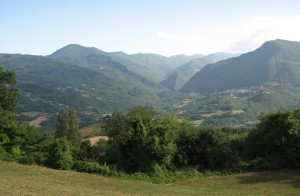The double-edged sword is iron. Our bodies need it in order to function normally, but too much iron can increase the risk of developing cancer by promoting free radicals, and let’s also not forget that, once you have cancer, your cancer cells eagerly gobble up this metal, which is essential to their growth and wellbeing.
But too little iron can lead us to develop anaemia, which is one of the markers of active myeloma. Anaemia, in fact, is the “A” in the acronym “CRAB.” Can’t have too much..can’t have too little…hence, the double-edged sword bit…
It just so happens that, according to my most recent (April) test results, my serum iron and ferritin (ferritin, by the way, is a protein that binds to and stores iron that the body can use when needed) are the lowest they have ever been, as far as I know. In May I went to see my fabulous family doctor who didn’t see that as a sign of the myeloma kicking up any dust. No worries. What is important, he remarked, is that my haemoglobin and haematocrit are normal (they are). By the way, he was very pleased with my overall results. So am I.
He told me to take an iron supplement to increase my serum iron levels, but, as stubborn as an Alpine goat, I decided to wait for my next test results (still haven’t taken them, by the way). The reason for my stubbornness will be clear at the end of this post.
I should mention that I have been intending to write about curcumin and its effect on body iron for quite some time now, but other things have been getting in the way. Today I was finally inspired to look over a draft that I wrote back in March (!), when an Italian blog reader (grazie!) left me a comment pointing to a study on curcumin that might provide an explanation for my low iron levels. Sherlock did not have access to that particular journal, but she was able to hunt down and send me a couple of other studies.
The first study deals specifically with curcumin and iron. It’s titled Iron chelation in the biological activity of curcumin and was published in “Free Radical Biology & Medicine” in 2006. You can read the abstract here: http://tinyurl.com/3q9zzu
But first, what is iron chelation? The body cannot metabolize some heavy metals such as mercury and lead, and an accumulation of too much of this stuff can cause toxic effects, interfere with regular body functions etc. Heavy metals can be removed from the body using what are called chelating agents that bind to metals, hold on tightly to ‘em and finally expel them.
Apparently that is what curcumin does. As we can read in the above-mentioned abstract, ferritin protein levels decreased in cultured liver cells when curcumin was present. And Mice that were fed diets supplemented with curcumin exhibited a decline in levels of ferritin protein in the liver.
And now for a look at the full study, without overloading the post with details that I can barely grasp myself. The first part examines the well-known chemopreventive action of curcumin, so skip skip skip.
Then we get to the ferritin-iron-curcumin discussion. The jargon in this part is quite convoluted, hard to translate into simpler language. I did my best. Oh, before I forget: I skipped the part about the increase in GST, or glutathione S-transferase, in cultured liver cells, since that would have made this post way too long. But if you are interested in GST, let me know, and I will be glad to forward the entire study to you. Back to business, now.
The researchers suggest that iron chelation may be a novel mechanism that contributes to the potent cancer chemopreventive activity of curcumin. In their tests, curcumin activated IRPs, or iron regulatory proteins. These thingies get activated when iron levels decrease, for instance as a result of treatment with iron chelators. So far, so good.
The team examined the effect of curcumin on mice whose diet also contained some iron. One group was fed more curcumin, another less, and then there was the usual control (no curcumin) group: ferritin H and L proteins were both reduced to approximately 50% of control in mice receiving 2.0% dietary curcumin. (“H” stands for heavy, “L” for light.) I would like to mention that in no case were any adverse effects or toxicity observed as a result of the administration of curcumin to the mice.
The team also found that curcumin induced ferritin mRNA but reduced ferritin protein in cultured liver cells. Ehhh? I know, I know. But I found a rather simple (?) explanation (the link to this UC Berkeley study that I used in my March draft doesn’t work anymore, sorry about that!) that may help us figure out the difference between the two types of ferritin: iron accumulates in tissues in a solid, slow release form thanks to the ferritin protein. Ferritin protein manages iron and oxygen.
Ferritin mRNA instead has to do with genes, as the “mRNA” part suggests: A special structure in ferritin mRNA controls the synthesis rate of ferritin protein when iron has entered the cell. Okay, this is probably still not completely obvious to anybody without a scientific background, like yours truly. But the point is: curcumin’s ability to distinguish between the two types of ferritin—increasing the levels of the one (ferritin mRNA) but decreasing the levels of the other (ferritin protein)—suggests that it acts as an iron chelator, since iron chelators do the exact same thing.
Let’s have a look at the study results: One mechanism of action of synthetic chemopreventive agents is the induction of cytoprotective proteins. These include ferritin, a protein that functions as a cytoprotective protein by virtue of its ability to bind iron and reduce oxidative stress. And, just like chemotherapy, curcumin increases the levels of both subunits of mRNA ferritin, H (heavy) and L (light).
But, in contrast with chemo drugs, the levels of regular ferritin protein H and L declined to approximately 65% of control in cells treated with curcumin. That is quite a drop. The team demonstrated, however, that it is possible to reverse the trend, since iron depletion causes decreased levels of ferritin: If iron depletion underlies the curcumin-dependent decrease in levels of ferritin protein, then it should be possible to reverse the effect of curcumin on ferritin by repleting cells with iron. That is exactly what happened, and the researchers found that iron blocks curcumin-dependent ferritin repression.
At the end of the study we get to a very interesting bit of news. The researchers suggest that the intake of iron as a dietary supplement may bind to and interfere with the beneficial activity of curcumin. Aha! And, in fact, earlier in the study they write that iron was recently shown to attenuate the cytotoxic effects of curcumin in cultured squamous cell carcinoma. So iron renders curcumin less effective. Makes sense.
Well, after reading this study, I will not be taking an iron supplement…for now, at least. I cannot and indeed should not avoid iron completely (it’s in a lot of foods, of course), but I certainly don’t want to take anything extra that might interfere with curcumin’s anticancer activities…no way!
![]()


